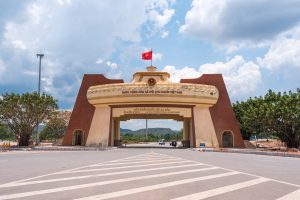
The theme for Indonesia’s chairmanship of the Association of Southeast Asian Nations (ASEAN) in 2023, “ASEAN Matters: Epicentrum of Growth,” aims to validate Southeast Asia’s status as an epicenter of economic growth. It also recognizes that maintaining economic growth necessitates ongoing efforts to internally integrate ASEAN’s ten economies and externally integrate them global partners.
External integration has proceeded faster than internal integration, according to several key indicators. ASEAN countries increasingly rely on trade and investment with non-ASEAN countries rather than among themselves. Such a dependency on external partners is probably inevitable, but ASEAN should not become overly reliant on a single external partner.
ASEAN has signed a number of ambitious agreements to encourage internal integration. The ASEAN Trade in Goods Agreement (ATIGA) of 2010 reduced intra-ASEAN tariffs to 0.2 percent in 2017. The tenth package of the ASEAN Framework Agreement on Services was agreed upon in 2018 and covers broader sub-sectors of services. The ASEAN Agreement on Electronic Commerce entered into force in December 2021. The development of an ASEAN Digital Economy Framework Agreement is high on the bloc’s agenda. The ASEAN Comprehensive Investment Agreement (ACIA) was signed in 2009 to position ASEAN as a preferred production and investment hub.
Nevertheless, the share of intra-ASEAN trade and investment has been steadily declining. Over the period 2012-2021, the intra-ASEAN merchandise trade increased by 17.3 percent, compared to 40.2 percent for extra-ASEAN trade, and its share of total trade fell from 24.4 percent to 21.3 percent. Intra-ASEAN trade in services fell from 18.8 percent to 11.7 percent, and intra-ASEAN foreign direct investment (FDI) fell from 20.4 percent to 13.1 percent of the total.
DIPLOMAT BRIEF
WEEKLY NEWSLETTER
N
Get briefed on the story of the week, and developing stories to watch across the Asia-Pacific.GET THE NEWSLETTER
The trend is not indicative of a flaw in ASEAN’s economic agenda; it is very much an implicit goal of the various ASEAN agreements on economic integration. For instance, the goal of ATIGA is to create free flows of goods for intra-ASEAN supply chain-related parts and components, for further manufacturing and export by member states to other parts of the world. ACIA provides benefits to ASEAN investors and ASEAN-based foreign investors through non-discriminatory investment liberalization. Increasing intra-ASEAN trade encourages inward FDI, and increasing FDI stocks encourage extra-ASEAN trade in much greater volume and value.




